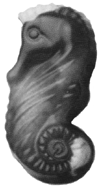

|
Of course: Peace Education

(Illustration: Tzigane)
"I ain't going to study war no more," goes the song. But in Professor David Smith's graduate course, "Peace Education," war and conflict are just as much grist for the mill as peace and resolution.
In fact, one of the tasks the chair of the Department of Culture and Values in Education assigns his students is to critique such conflict-riddled films as Witness and Born on the Fourth of July. But he also has them view Gandhi to get a sense of the Indian pacifist's analysis of peace, violence and non-violent action, and Manufacturing Consent, for insight into Noam Chomsky's analysis of the media's method of legitimizing war or, at least, the American support of various wars.
And how is this applied in the classroom? All of the students have been practising teachers, so Smith has them consider how just about any subject, from English to math, from history to art, may be used to understand the nature of violence, conflict, destruction, resolution and peace.
In literature, for instance, there are examples of constructive and destructive conflict, says Smith, who launched the course five years ago.
Shakespeare's Hamlet exemplifies destructive conflict, while his As You Like It exemplifies constructive conflict. "The principal villain in the play meets a wise sage who convinces him his actions have been wrong; he recants, there is a reconciliation and it ends in three celebrations of marriage."
Christine Atukoit-Malinga, a PhD student from Uganda, hopes there may be such reconciliation with society for the boys emerging from her country's army who have virtually no education but in warfare. Her thesis on the education of child soldiers, which Smith is supervising, will treat the matter of educating these social outcasts in such a way that they become "peace-builders," says Atukoit-Malinga.
"In my experience, it's the teachers who have the direct link with students, families and communities," she says, noting her work will have implications for many countries where boys are forcibly conscripted to fight.
|
|
Sweet support
 Although things are improving a bit of late, competing for grant money is still awfully tough. Professors often feel they have to scratch and claw their way through the funding maze to get the money they need to keep their projects going. Although things are improving a bit of late, competing for grant money is still awfully tough. Professors often feel they have to scratch and claw their way through the funding maze to get the money they need to keep their projects going.
Which is why biology professor Amanda Vincent was so delighted when Chocolaterie Guylian recently phoned. Out of the blue, the chocolate company offered Vincent $750,000 U.S.
"It's not the sort of offer you receive very often as a university academic," says Vincent. "You usually have to get out there and apply for support."
Vincent explains that Guylian, which sells its chocolates in 140 countries, was looking for a conservation project to hook up with, partially out of altruism, partially for marketing purposes.
The company produces some of its chocolates in the shapes of seashells (its top product) and seahorses. The World Wildlife Fund International informed Guylian about Vincent's Project Seahorse -- an international effort aimed at better understanding seahorses while protecting the species from over-harvesting and other threats -- and the company knew who it wanted to do business with.
Vincent says the money will go towards hiring five new members for her team and boosting Project Seahorse's research output. Work will be expanded into the study of seahorse biology and Australia and Europe will be targeted for new research efforts.
Guylian is also becoming an invaluable ally in promoting Project Seahorse. It footed the bill for the publication of a recent book by Vincent and her team about seahorses and maintains a link to Project Seahorse's web site from its own. The company will also be printing an alert about threats to seahorses on every box of its chocolate seashells.
Vincent hopes the publicity will pay dividends for more than just seahorses. She works with fishing communities in underdeveloped regions to create systems whereby fishers can harvest seahorses without fishing them to extinction. Seahorses often draw attention to the plight of these often impoverished communities. The creatures also share environmental enemies with a number of other aquatic species.
"Seahorses are sexy creatures, they help draw attention to the need to protect sea grasses, coral reefs and to other important issues," says Vincent.
|
Conscientious coffee

If, while sipping your mocha java at the corner coffee bar, your conscience regarding the awful working conditions of many coffee-farmers gives you indigestion, a remedy is close at hand.
It's called "fair trade coffee," and hundreds of McGillians had the opportunity to sample the stuff recently at the tables run by QPIRG-McGill for the group's Fair Trade Awareness Week.
Fair trade goods are certified by a number of agencies in Europe and their production must have such characteristics as healthy working conditions, fair pay, co-operative ownership of the land, democratic governance, re-investment of profits in the community, ecological cultivation practices and producer-consumer commerce that's as direct as possible.
In Europe, commonly available free trade products like coffee, tea, sugar, nuts and bananas grab approximately five per cent of the market, says Boris Legault, co-ordinator of QPIRG-McGill.
It was after spending a year in Sweden, where such products were commonly available, that Legault, a computer science student, decided to get involved in Quebec. "When the campaign began in 1996, fair trade coffee took .01 per cent of the market; now it's one per cent," he says, adding that the potential for growth here is between five and 10 per cent over the next 10 years.
At McGill, QPIRG had a recent victory in their campaign to have the coffee available at all student eateries and societies. Now, along with Thompson House and the Architecture Café, the Student Union cafeteria serves fair trade brew. This variety is distributed by Bridgehead, an offshoot of the aid organization Oxfam, and one of a growing number of fair trade operators.
On campus, ground coffee and other products are available at QPIRG. Off campus, numerous cafés and stores carry a variety of products and blends of coffee.
QPIRG, open from 10:30 am to 5:00 pm is located at 3647 University Ave.
Locations of other free trade outlets may be found on the web site: www.cam.org/~equiter.
|
Kim the conqueror

PHOTO: ANDREW DOBROWOLSKYJ
Physical education student Kim St. Pierre led the Canadian women's hockey team to victory at the recent Three Nations Cup championship. The star goaltender of the McGill Martlets hockey squad led Canada to a 3-2 victory over the United States in the tournament's final and was named the event's most valuable player.
The tournament featured the national squads from Canada, the U.S. and Finland, the top three women's hockey countries in the world.
St. Pierre stopped 38 shots in regulation time during the title match and was perfect in the shootout. She beat the U.S. team in all three games she played against them during the tournament.
|
|

|




